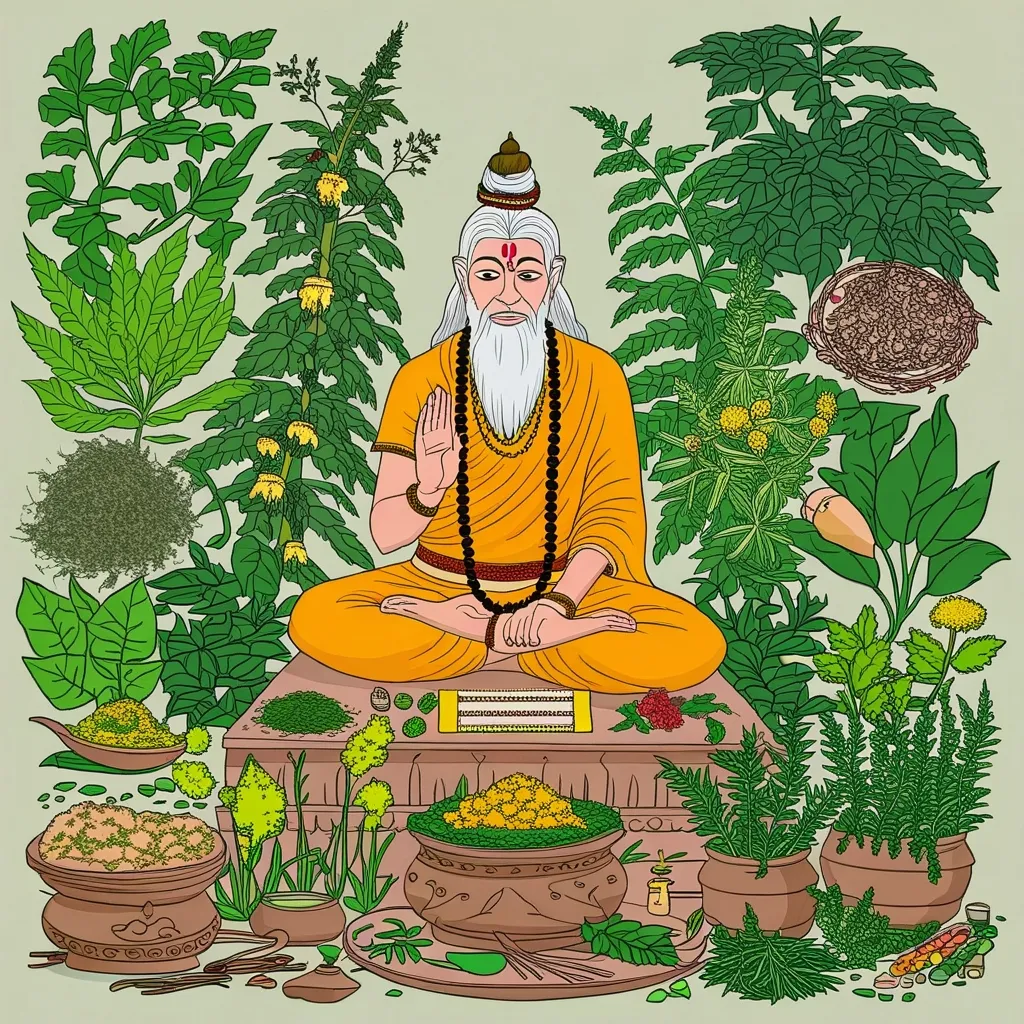In the vast repository of ancient Hindu texts, the Yajurveda stands out as a goldmine of wisdom about herbal remedies and healing plants. This particular Veda, one of the four cornerstones of Vedic literature, isn’t just about spiritual rites but also about botanical brilliance passed down through the ages.
Plants and Their Importance in Yajurveda
The Yajurveda, often labeled as the “Veda of the Adhvaryu” (the priestly figure who handles sacrificial rituals), greatly emphasizes the importance of plants. These aren’t just spiritual tokens but magic bullets with medicinal and secular heft. Think plants like lotus and lily: beautiful to look at and packed with health benefits, as well as roles in sacred ceremonies.
Rituals and Plants
Plants are an essential part of Vedic rituals. Yajurveda meticulously details the use of various plants in sacrificial ceremonies. For instance, specific wood types are burned in the sacrificial fire, and oblations are prepared using grains like barley and rice. Rituals get a boost from chanting mantras, which supposedly ups the mojo of the plants involved.
Magic and Medicine
Moving beyond rituals, the Yajurveda gives plants props for their magical and medicinal powers. Take herbs like darbha (a type of grass) and satamba. These are praised for their healing prowess. In the Vedic world, magic and medicine are intertwined, meaning herbs alone aren’t seen as potent unless accompanied by mantra chanting.
Plant Profiles
Dipping into the botanical pool, the Yajurveda catalogs around 71 plant species, spanning 32 families. Of these, 28 species are trees, five are shrubs, and the remaining 38 are herbs. Fascinatingly organized, this ancient classification reflects an early yet surprisingly adept grasp of plant biology.
Healing Plants in Action
Some of the plants listed in the Yajurveda are still go-to remedies in today’s medicine cabinet. For instance, the herb “isika” has antiseptic properties and is used to treat conditions like painful urination and bladder inflammations. “Dūrvā” grass is another whose cooling and soothing traits are documented in various Vedic texts.
Link to Ayurveda
The botanical knowledge in the Yajurveda is intricately tied to Ayurveda, India’s traditional healing system. Ayurveda, translating to “Science of Life”, melds yoga, meditation, astrology, and herbalism into a comprehensive health guide. The four Vedas, including the Yajurveda, lay the foundational framework for Ayurvedic medicine. Plants like turmeric and holy basil, pillars of Ayurveda, are also revered in the Yajurveda for their healing properties.
Practical Uses
The Yajurveda’s treasure trove of plant wisdom isn’t strictly limited to rituals—it spills over into daily life too. For example, the text covers agricultural uses of plants and their role in maintaining ecological harmony. It elaborates on how certain plants boost soil quality and others act as natural pesticides.
Bringing Ancient Wisdom to Modern Times
Despite their ancient origins, the Yajurveda’s insights into plant properties remain relevant. Modern science has affirmed many of the medicinal uses described in the Vedic texts. Herbs like ginger and ginseng, noted in the Yajurveda, are backed by contemporary research for their therapeutic benefits.
Safeguarding Ancient Wisdom
Efforts to preserve Vedic knowledge, particularly botanical wisdom, have been relentless. Scholars have painstakingly analyzed, interpreted, and documented this rich heritage. For example, the Taittiriya Sakha of the Yajurveda has been thoroughly studied to unravel the significance of plants in both rituals and everyday applications.
In essence, the Yajurveda stands as a shining testament to how deeply the ancient Indians understood nature and harnessed the healing power of plants. This Veda not only sheds light on the spiritual and ritualistic applications of plants but also offers a treasure trove of medicinal knowledge. Exploring this ancient wisdom reminds us of its enduring relevance even in today’s high-tech world.






